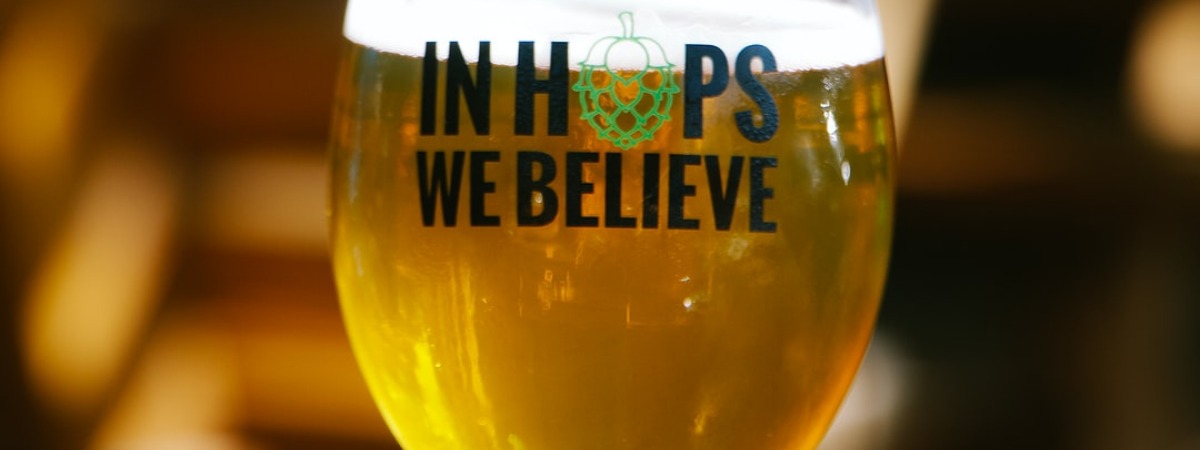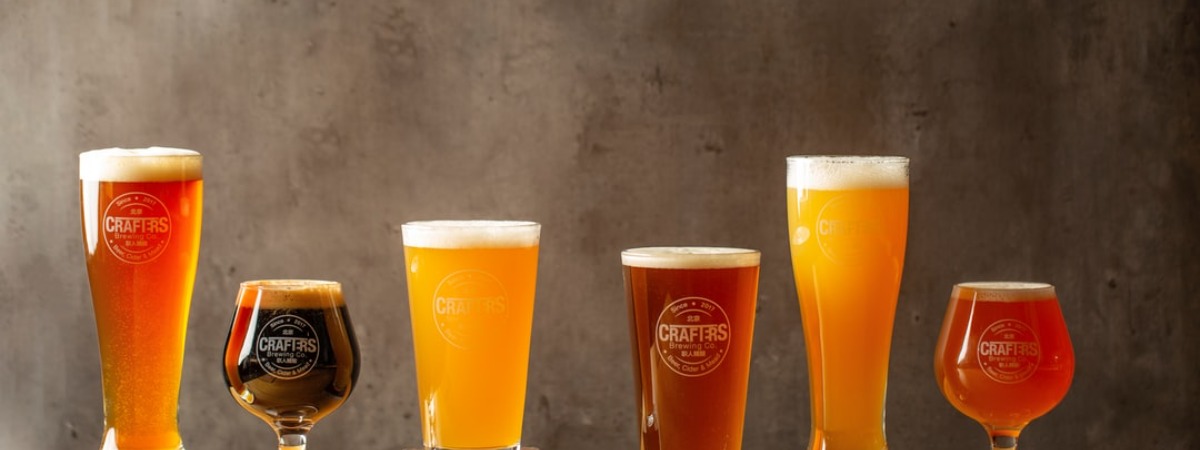Contents
Most Popular Styles of Beer
Beer has been a beloved alcoholic drink for centuries. Early records of beer consumption date back to the year 5000 B.C. In the more recent past, the U.S. beer market was dominated by big-name brands like Budweiser, Coors, and Miller High Life who all put out good products, but the variety was more limited. Fast forward to today, and you can find limitless types of beer on the market.
In recent years, the craft beer industry has been booming within the United States. According to the Brewer’s Association, the craft beer industry is valued at $26 billion, and the entire U.S. beer market is worth a whopping $111.4 billion. Sales of craft beer total $26 billion annually and now make up 23% of total sales for beer in the U.S.
Consumer studies have found that beer is the most widely consumed alcoholic beverage and that coffee and tea are the only other beverages consumed more frequently than beer. Although variety is often welcomed by adventurous flavor seekers, the large number of choices available on the market can also be overwhelming for consumers. Thus, we have narrowed down the top 5 types of beer to choose from: Ales, Lagers, Stouts, Porters, and Malts.
Ales
“Ales” describes several types of beers and can be broken down into several subcategories including India Pale Ale (IPA) and Pale Ale. IPAs are widely popular and often the first type of craft beer people will try. They tend to be higher in alcohol than other types of beers. The flavor of IPAs is characterized by bitterness and a lot of hops, which often brings a floral or fruity taste to the beverage. IPAs can further be categorized by style of beer, which is often dependent on the region in which it was brewed. Examples of these types of beer include West Coast IPAs, New England-style IPAs, etc.
Another type of ale, called Pale Ale, is similar to the IPA in that it offers a lot of hops. One example of this is Ranger Creek Oatmeal Pale Ale. What differentiates them from other types of ales is that Pale Ales tend to be lower in alcohol percentage and thus considered easier to drink. Other names for Pale Ales include Blonde Ales and Amber Ales. Ales are sometimes brewed with fruit to further bring out the fruity flavor of this type of beer.
Pros
- Given the number of subcategories of beer that are all considered “ales”, this type of beer offers a huge amount of variety
- Ales are often brewed with fruit which adds a burst of flavor and balances out the hops with sweetness
Cons
- More complex flavor
- Might not be desirable for those looking for an easy-drinking beverage
Fermentation Process
Although it should be noted that it is difficult to generalize such a broad category of beer, ales are typically fermented using a larger percentage of hops. They are also well-fermented, which means less residual glucose (sugar) is left behind, and the alcohol content is higher.
Lagers
Lagers are a light beer typically low in alcohol percentage. They tend to have a light malty flavor, but are not as bitter as other types of beer. If you have tried some of the classic beers like Milwaukee’s Best, Budweiser, or Coors Banquet, then you have already tasted your first lager.

A recent trend with lagers has been the creation of the radler, also known as a shandy. This style of beer mixes carbonated juice with a lager style beer for a sweet and refreshing, low-alcohol beverage.
Pros
Lagers are considered an easy-drinking beer
Great option for those new to the craft beer scene
Cons
Due to their simplistic nature, some lagers lack the complexity of flavor
Fermentation Process
The yeasts used to make lagers are unique in that they remain activated when chilled; most yeasts become dormant when they reach colder temperatures. Because lager-style beers are kept at a colder temperature during the fermentation process, the yeasts are slowed down slightly. Therefore, it takes longer to brew this type of beer, and typically up to 4 weeks.
Stouts
You have probably heard of Guinness beer before, but may not have realized that it is a stout beer. These creamy beers have a slightly sweet flavor, often with hints of caramel, chocolate, or coffee to complement the full-bodied beverage. Do not let the dark color intimidate you, though, as stouts are considered drinkable with enough sweetness to balance out any bitter flavors. The dark color comes from unmalted, roasted barley that is used to make this type of beer.

There are many subtypes of stouts, all with unique flavor profiles. Some examples include chocolate stout, oatmeal stout, and imperial stout. The alcohol content of this type of beer varies but tends to be moderate.
Pros
Stouts have an easy drinkability yet more complex flavor profile
Cons
This type of beer may not be favored by people who prefer a lot of hops
Fermentation Process
Stouts are made using top-fermenting yeasts, which means they are collected from the top of the barrel following the fermentation process. The yeasts use up less glucose, which contributes to a slightly sweeter flavor profile.
Porters
Porters are very similar to stout beers and so often have a similar flavor profile. Porters are most often brewed using roasted malted barley as the source of carbohydrates. Some porters will have more hops added as compared to other types of stout beers. Porters also tend to have more hints of chocolate, and less of a coffee flavor when compared to stouts.
Deschutes Black Butte is an example of a great, highly drinkable porter.
Pros
Porters tend to be flavorful yet easy to drink
Cons
The more limited category of beer means you may not find as much variety in flavor.
Fermentation Process
There is no significant difference in the fermentation process between a porter and a stout. The largest difference between a stout and a porter is in the ingredients used. While stouts are most often made with unmalted roasted barley, porters are brewed using malted barley.
Malts
Malt beers tend to be dark-colored, but sweet. They have a low alcohol content, typically ranging 0 to 3% alcohol by volume (ABV). The dark color is derived from the malts being roasted at a high temperature.
One great example of a dark, malt beer is Dogfish Head Raison d’Etre.
Pros
The sweet and malty favorable is desirable for a wide range of flavor palettes
Cons
Very low alcohol content
Fermentation Process
Malt beers have low fermentation as compared to other types of beer. Often, the yeasts are added at a low temperature (0 degrees Celsius) which prevents them from fermenting quickly. In another method for brewing malt beer, the fermentation process is purposely ended early. This keeps the alcohol content of this beer low. It also helps ensure that a lot of carbohydrate (glucose) is left remaining in the beverage which contributes to the sweetness of a malt beer.
The Verdict
For those who are just getting introduced to craft beers, we suggest starting with a lager. The low alcohol content and simple flavor profile make this an easy-drinking type of beer. However, if you are interested in a more complex flavor profile, consider a stout or porter. These beers are balanced in flavor, with enough sweetness to outweigh bitterness. While both stouts and porters contain some hops for flavor, it is not as overwhelming as a Pale Ale or IPA. The greatest thing about craft beer is the wide variety, so be sure to try all types of beer until you find what you personally like best.
Beer FAQ
What Is Beer Made From?
The standard ingredients for beer are simple: grain, hops, water, and yeast. The types of grains most often used to make beer include barley, wheat, rye, and sometimes corn or rice. As gluten-free beer becomes popularized, less common types of grains are also being used to make beer such as buckwheat, sorghum, and millet.
Hops are harvested from a plant known as Humulus Lupulus. It is the flower on this plant that largely plays a role in flavoring various types of beer. Lastly, yeasts are added to make beer. Yeast is an important ingredient that allows for fermentation to occur.
How Does Fermentation Work?
Fermentation is often described as both a science and an art, in which precise chemical reactions are combined with culinary flair. During the fermentation process, the yeasts in beer consume glucose, which is a type of sugar that is found in grain ingredients. The byproduct of this reaction is the production of carbon dioxide (CO2) and ethyl alcohol. This is why beer is both a carbonated and alcoholic beverage.
This process is temperature dependent, meaning that the developing beer must be kept in a container with a constant temperature, typically somewhere between 48 degrees Fahrenheit (9 Celsius) and 68 degrees Fahrenheit (20 Celsius), depending on the type of beer being made. The entire process takes somewhere between two to six weeks.
Where Can You Buy It?
Beer can be purchased online or at supermarkets, liquor stores, restaurants, bars, and convenience stores. It is available either canned, bottled, or straight from a draught.
The availability of beer outside of liquor stores will depend on state and local laws. Some states also have laws that restrict the purchase of beer and other alcoholic beverages on certain days and at certain times. Be sure to check out the laws specific to your region.
Alcohol can also be purchased online. However, keep in mind that in the United States, it is illegal to purchase alcohol if you are under the age of 21 years old.
What Is the Nutritional Content of Beer?
Keep in mind that the nutritional content of beer will vary widely based on the type of beer you are drinking. In general, a 12-ounce serving of beer will provide about 150 calories, 2/3 of which is provided by alcohol.
The alcohol content of beer ranges widely, but most often falls between 3-9% alcohol by volume. Most beer provides around 10 to 15 grams of carbohydrate, and minimal protein (around 1 gram). It also contains a trace amount of nutrients, including calcium, vitamin B6, soluble fiber, and magnesium. Like red wine, craft beer also contains antioxidants and bioflavonoids that can play a role in the prevention of certain diseases like cancer and heart disease.
The implications of alcohol consumption on long-term health are controversial, but in general, it is recommended that men drink no more than 2 alcoholic beverages per day, and women drink no more than one alcoholic beverage per day.

